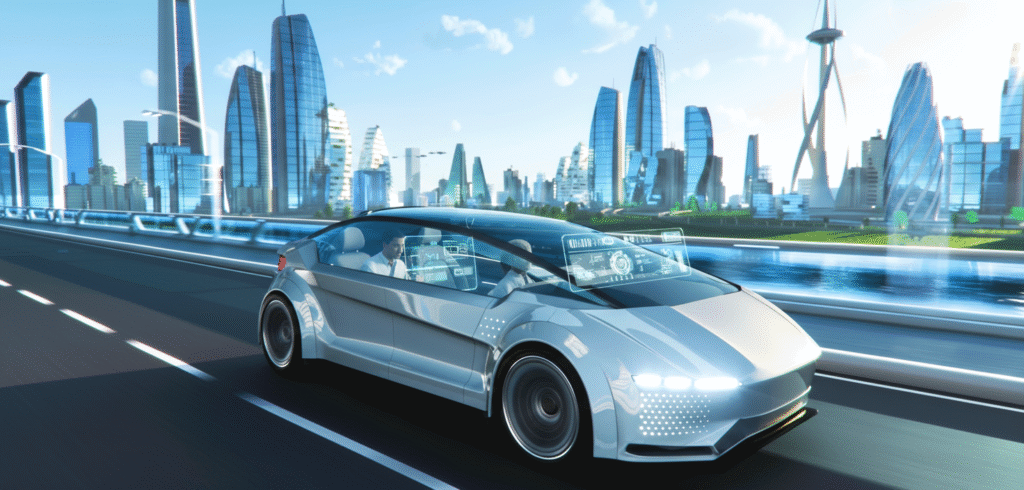Why Self-Driving Cars Matter Right Now
Imagine sitting in your car, sipping coffee, scrolling through your emails—or even taking a quick nap—while your car safely navigates rush hour traffic. For decades, this lived in the realm of sci‑fi novels and Hollywood movies. Today, we’re on the edge of making it real. Self-driving cars, or autonomous vehicles (AVs), aren’t just flashy prototypes at tech expos anymore. They’re being tested on real roads across the globe, from Phoenix to Shenzhen, sparking one of the biggest transformations since the invention of the automobile.
But here’s the twist: the road ahead is as complicated as a five‑way intersection with a broken traffic light. Questions about safety, regulation, infrastructure, jobs, ethics, and public trust remain unsolved.
This guide walks you through where autonomous vehicles stand today and where they’re headed tomorrow: the technology, benefits, challenges, major players, timelines, safety debates, and even how car ownership might change. Think of it as your driver’s manual for the self-driving revolution—written in plain English, with sprinkles of humor to keep the ride smooth.
What Exactly Are Self-Driving Cars?
Before we speed into the future, let’s clarify: what is a self-driving car?
Autonomous vehicles use a network of sensors, cameras, radar, lidar, AI software, and high-definition maps to perceive their surroundings, make decisions, and drive with little or no human input.
The SAE (Society of Automotive Engineers) defines automation on six levels:
| SAE Level | Description | Example |
|---|---|---|
| Level 0 | No automation | Traditional cars |
| Level 1 | Driver assistance (steering OR acceleration support) | Adaptive cruise control |
| Level 2 | Partial automation (hands on!) | Tesla Autopilot |
| Level 3 | Conditional automation (hands off, eyes on standby) | Mercedes Drive Pilot (on approved roads) |
| Level 4 | High automation (driverless in geofenced zones) | Waymo robotaxis |
| Level 5 | Full automation, everywhere, under all conditions | Still theoretical |
So when discussing the future, we’re really focusing on Level 3–4 being deployed, and Level 5 as the long-term ambition.
How Do Self-Driving Cars Actually Work?
Think of them as hyper-attentive teenagers: nervous but endlessly observant. Three layers make it happen:
- Perception Systems
- Cameras detect traffic lights, lane markings, pedestrians.
- Lidar builds a 3D map of the environment.
- Radar measures distance, velocity, and objects hidden by fog or rain.
- GPS with precision HD maps pinpoints positioning down to centimeters.
- Brain/Decision-Making Software
- Neural networks interpret sensor inputs.
- Predicts how pedestrians, cyclists, and drivers behave.
- Chooses actions: brake, accelerate, change lanes.
- Vehicle Control Mechanisms
- Electronic systems translate those decisions into movement (like steering and throttle).
In short: Sensors collect 🡢 AI interprets 🡢 Car responds.
What Are the Main Benefits of Self-Driving Cars?
Big hype, yes—but the benefits might outmatch it.
- Improved Road Safety
- Human error accounts for over 90% of crashes.
- As of early 2025, Waymo reports its rider-only fleet reduced intersection crash injuries by 96% versus human benchmarks, across more than 56 million driverless miles.
- Traffic Efficiency
- Fleet algorithms can coordinate smoother flows and reduce gridlock.
- “Platooning” in trucks cuts drag and fuel use.
- Accessibility
- Greater mobility for the elderly, disabled, and non-drivers.
- Environmental Gains
- Efficiency reduces idling and emissions.
- Pairing with electric drivetrains accelerates decarbonization.
- Time Savings
- Commuting becomes “passenger time,” unlocking the $7 trillion “passenger economy” by mid-century.
What Challenges Are Holding Back Self-Driving Cars?
Autonomy was hyped for “by 2020.” Reality check: it’s harder than imagined.
1. Technical Challenges
- Snow, fog, and rain obscure sensors.
- “Edge cases” like unexpected jaywalking or someone on a unicycle with two shopping bags (true test scenario!) confuse AI.
- Split-second, ethically loaded decisions—who to protect when an accident is unavoidable.
2. Regulatory & Legal Barriers
- Whose fault is it if an AV crashes—the driver, manufacturer, or software coder?
- Each country sets different rules, slowing global rollout.
- In 2025, Zoox won an exemption in the U.S. for its custom AVs, a small but key policy shift.
3. Safety & Trust Concerns
- California in 2024 recorded 28,800+ disengagements (human-takeovers) showing the systems aren’t flawless.
- Past high-profile crashes leave trust scars.
4. Cost & Infrastructure
- Lidar and high-end chips are pricey (though dropping year by year).
- Roads need V2X (“vehicle-to-everything”) upgrades for smoother safety integration.
5. Workforce Disruption
- 3+ million U.S. driver jobs in trucking, taxis, and delivery are at stake.
- Yet new roles emerge in AV software, robotics maintenance, fleet management, cybersecurity.
When Will Self-Driving Cars Become Mainstream?
The most asked—and most debated—question.
- By 2025: Level 3 features available in high-end sedans (Mercedes, Honda, Audi). Tesla markets “Full Self Driving” but remains at Level 2.
- By 2030: More Level 4 robotaxi services scale in select cities (Waymo, Cruise, Zoox).
- By 2040s: Potential (but not guaranteed) consumer-ready Level 5 cars.
For now, we’re in a hybrid era: AVs coexist with human drivers.
Who Are the Major Players in the Self-Driving Race?
It’s a crowded race track:
- Waymo (Alphabet) – Over 56 million rider-only miles logged by 2025; pioneer in Phoenix and SF.
- Tesla – Markets “FSD,” though experts note it’s still Level 2 with human oversight required.
- Cruise (GM) – Faced 2024 regulatory suspensions but remains active in testing and refinement.
- Zoox (Amazon) – Won exemption to deploy custom shuttle-like AVs in 2025.
- Aurora, Nuro – Focusing on long-haul trucks and delivery bots.
- Traditional automakers like Ford, Toyota, Honda, and Mercedes invest to not be left behind.
As of 2025, the U.S. AV industry has surpassed 145 million autonomous miles logged, doubling in just one year.
How Will Self-Driving Cars Affect Jobs & the Economy?
- Job Displacement: Truckers, delivery drivers, taxi operators at risk.
- Job Creation: AI engineers, AV fleet monitors, software technicians.
- Economic Value: Industry projected at $1.5 trillion by 2035, driven by reduced crashes, insurance savings, passenger productivity, and tech markets.
How Safe Are Self-Driving Cars Compared to Humans?
Humans: ~38,000 road deaths annually in the U.S.
AV advocates: If machines simply drive “better on average,” they save lives.
Caveats:
- AVs nail predictable conditions but struggle with unpredictable quirks.
- Ethical programming dilemmas remain unresolved.
Key takeaway: They don’t need to be flawless, just statistically safer than us distracted humans.
Will Self-Driving Cars Change Car Ownership?
Almost certainly. Instead of personal ownership:
- Fleet-based mobility services—think Uber without drivers.
- Subscriptions instead of car loans.
- Urban redesign with less space needed for parking.
This shift could redefine personal transport as we know it.
Comparison Table: Human-Driven vs. Autonomous Future
| Factor | Human-Driven Cars | Self-Driving Cars |
|---|---|---|
| Safety | 90% accidents from human error | Reduced crashes; AI oversight improves safety |
| Cost of Transport | High (ownership, fuel, insurance) | Lower with shared fleets & automation efficiencies |
| Stress Factor | Traffic jams, fatigue | Relax and let the car handle stress |
| Accessibility | Only for those licensed | Service for elderly, disabled, non-drivers |
| Adoption Timeline | Already universal | Gradual rollout over decades |
FAQs About the Future of Self-Driving Cars
Q1: Are self-driving cars legal right now?
Yes, but in limited contexts. U.S. states like Arizona, Nevada, and California permit testing. Germany has approved Level 3, and Japan is exploring AV integration.
Q2: Can I buy a fully driverless car today?
No. Current “self-driving” packages (Tesla FSD, Mercedes Drive Pilot) require human fallback.
Q3: Will self-driving cars eliminate traffic?
Not completely—city design is a big factor. But AV coordination reduces gridlock and wasted fuel.
Q4: How much do they cost?
Prototype systems are expensive—hundreds of thousands—but will fall as lidar, sensors, and chips scale down in price.
Q5: Do AVs require 5G?
Not to function (each car has local autonomy), but 5G improves safety through faster data exchange in “connected vehicle networks.”
Final Thoughts: The Road Ahead
Self-driving cars aren’t simply a “transportation upgrade.” They’re a societal shift—reshaping safety, jobs, cities, and even how we spend time.
The rollout has been slower than Silicon Valley promised, but progress is steady. Each year, milestones—like tens of millions of real-world miles driven or regulatory exemptions—edge us closer to turning science fiction into the commute of tomorrow.
The road to full autonomy won’t be a straight highway. It’s more like a scenic mountain pass: winding, cautious, but heading steadily upward.
One day, your grandchild might gape at you: “Wait—you had to steer the car yourself?!” And you’ll smile, remembering traffic jams with very little nostalgia.

